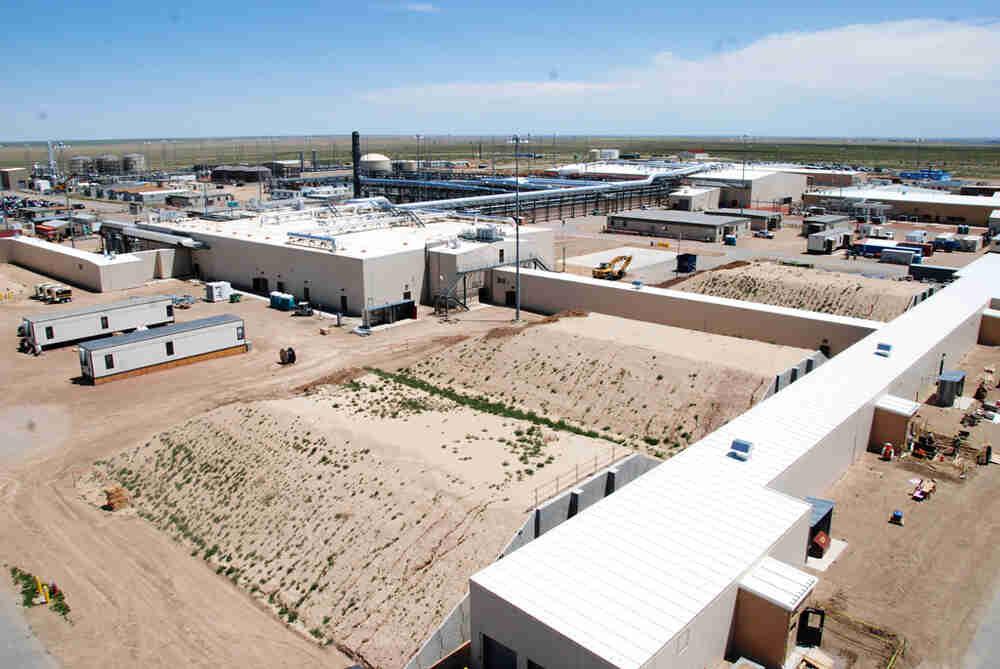Pueblo Chemical Depot
Full Article
Pueblo Chemical Depot was established in 1942 as the Pueblo Ordnance Depot. The facility’s mission has changed over the years, from starting with receiving, storing, and issuing general supplies of ammunition during World War II, to later handling the disposal of munitions. Today, the depot’s mission is the destruction of one of the last stockpiles of US chemical weapons, notably its store of 780,000 shells of mustard agent.
From 1946 to 1948, the depot was charged with maintaining and overhauling artillery, fire control, and optical equipment as well as the renovation and demilitarization of ammunition as it returned from the combat theaters of World War II. The US Air Force used the facility after 1951 to distribute ammunition. In 1952 Rocky Mountain Arsenal transported chemical weapons to Pueblo for secure storage. During the Korean War, the facility was renamed the Pueblo Army Depot and tasked with supplying the army with munitions. Finally, in 1987, with the signing of the Intermediate-Range Nuclear Forces Treaty, the United States and the Soviet Union agreed to ban “nuclear and conventional ground-launched ballistic and cruise missiles with intermediate ranges.” Pueblo completed the disassembly of weapons in compliance with this treaty in 1991.
Pueblo Depot Activity and Pueblo Chemical Depot
As the depot provided ammunition and supplies to Southwest Asia in Operation Desert Storm and Operation Desert Shield, it was renamed once again to Pueblo Depot Activity. The facility was renamed for the last time in 1996, becoming the Pueblo Chemical Depot. After its decades-long role as a supplier of munitions, it was ordered by the Base Realignment and Closure Committee to destroy rather than distribute weaponry. Repurposing the depot from munitions storage and distribution to decommissioning has left thousands of acres vacant and dormant, and this acreage continues to grow as more weapons are destroyed. In 1998, following the commencement of weapon destruction at the Pueblo Chemical Depot, only 33 of 862 buildings were occupied. The enormous plots of unused land and many vacant and deteriorating buildings angered residents of Pueblo, while the US Army hampered efforts to reclaim and redevelop the area.
In 1997, under the Chemical Weapons Convention (CWC), the United States agreed to destroy all of its chemical stockpiles. The Pueblo facility was one of the sites selected to fulfill the stipulations of this international treaty. Although the depot’s mission in recent decades has emphasized safety and security throughout the destruction, destroying mustard agent is a dangerous and necessarily slow process. Risks include blistering of skin, scarring of eyes, and inflammation of airways. Concerned parties such as the Pueblo Citizens Advisory Commission, also cited mercury vapor as another harmful by-product of incineration.
To address these concerns, the Pueblo Chemical Agent Destruction Pilot Plant, a higher-capacity destruction facility, was built in 2015. This new facility uses a different, more innocuous means to accomplish its assignment, relying on neutralization and biotreatment of the chemical agents instead of incineration.
Implementing this procedure required a redesign of the Pueblo facility, approved by Congress in 2003 at a cost of $169 million. For some munitions that were difficult to disarm with neutralization and biotreatment, project overseers elected to use explosive destruction technology. Simply put, this procedure employs the heat and explosive pressure of the munitions themselves for their destruction. Following neutralization, the product will be disposed of at various waste dumps depending on the hazards associated with the byproducts. Operations at the plant continue despite ongoing concerns about the cost, now estimated at $2.6 billion, and about consequences to the environment and public health.. The chemical weapons cache, the largest remaining in the United States, is scheduled to be totally obliterated by 2019.
Downsizing, Repurposing, and Redevelopment
Currently, the Pueblo Chemical Depot works with federal, state, and civilian organizations to treat, store, and dispose hazardous wastes under the Resource Conservation and Recovery Act. The US Army Chemical Materials Activity, in collaboration with the Colorado Demilitarization Citizens’ Advisory Commission, oversees the depot’s activities. The depot also works with the Chemical Stockpile Emergency Preparedness Program to develop emergency plans and provide chemical accident response equipment and warning systems. The 23,000-acre site is currently downsizing to 7,000 acres, with the remainder of the space being redeveloped to host manufacturing and commercial facilities.
Since the Pueblo Chemical Depot opened in 1942, its use shifted from a key supplier of deadly munitions to a key destroyer of them. In compliance with international treaties and mandates concerning the demilitarization of chemical weapons, the Pueblo facility will continue to assist the United States fulfill its disposal quotas.



